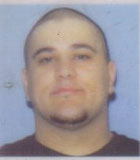Review of Journalism and Mass Communication, 1(1), pp. 01-13.
Abstract
This article explores the ways in which newspaper editorials frame the Italian-American cast of MTV’s popular reality television, Jersey Shore. Jersey Shore debuted amid large amounts of controversy regarding the ways in which the show represents Italian-Americans. Previous researchers (Gamson, 1989; Iyengar, 1991; Entman, 1993, 2004, 2007) have approached framing analysis from a variety of perspectives. This article uses a qualitative analysis based on Entman’s (1993) approach to media framing, with the goal of understanding how editorial writers reacted to and subsequently framed the Italian- American stars of the reality show. Findings show that the frames that emerged in this study do not represent an evolution from the historical popular culture stereotypes of Italian Americans. Hence, familiar stereotypical and distorted depictions of Italian Americans (re)emerged and dominated the majority of the editorials
Full Text: PDF
Giannino, S. Steven. (2013). Guidos and Guidettes: Exploring Editorial News Media Frames of Italian-Americans on Jersey Shore. Review of Journalism and Mass Communication, 1(1), pp. 01-13.
Adalian, J. (2004). From renegades to royalty. Variety, p. 99.
Dahmen, N. (2010). Construction of the truth and destruction of a million little pieces. Journalism Studies, 11(1), 115-130.
Dubrofsky, R. E .(2006). The Bachelor: Whiteness in the harem. Critical Studies in Media Communication, 23(1), 39-56.
Eagleton, T. (1991). Ideology. London: Verso.
Entman, R. M. (1993). Framing: toward clarification of a fractured paradigm. Journal of Communication, 43, 51-58.
Entman, R. M. (2004) Projections of power: Framing news, public opinion, and U.S. foreign Policy. Chicago: The University of Chicago Press.
Entman, R. (2007). Framing bias: Media in the distribution of power. Journal of Communication, 57(1), 163-173.
Entman, R.M. & Rojecki A. (2000). The black image in the white mind: Media and race in. America. Chicago: University of Chicago Press.
Fiske, J. (1987). Television culture. London: Methuen.
Gamson, William A. (1992). Talking Politics. Cambridge: Cambridge Univ. Press.
Gray, H. (1988). Watching race. University of Minnesota: Minneapolis. hooks, b. (1992). Black looks:
Race and representation. Boston: South End Press. hooks, b. (1994). Outlaw culture: Resisting Representations. New York: Routledge.
Iorizzo, L. & Mondello, S. (2006). The Italian Americans: Third edition. London. Cambria Press.
Iyengar, S. (1991). Is anyone responsible? How television frames political issues. Chicago: University of Chicago Press.
Krosnick, J. A. and D. F. Alwin. (1988). A test of the form-resistant correlation hypothesis: Ratings, rankings and the measurement of values. Public Opinion Quarterly, 52, 526-538.
LaGumina, S. (1999). WOP! A documentary history of anti- Italian discrimination. New York. Straight Arrow Books.
McGrath, T. (1999). MTV: The making of a revolution. Darby, PA. Diane Publishing Company.
McQuail, D. (2005). McQuail's mass communication theory (Fifth Edition ed.). London: Sage Communications.
Messina, E. (2004). Psychological Perspectives on the Stigmatization of Italian Americans in the American Media. In R. Marchesani, & M. Stern, (Eds.), Saints and rogues: Conflicts and convergence in psychotherapy (pp. 87-121), New York: Haworth.
Miller, A. & Ross, S.D. (2004). They are not us: Framing of American Indians by the Boston Globe. The Howard Journal of Communication, 15, 245-259.
Murry, S. & Ouellette, L. (2009). Reality TV: Remaking television culture: New York: New York City Press.
Orbe, M. (2008). Representations of race in reality TV: Watch and discuss. Critical Studies in Media Communication, 25(4), 345-352.
Orbe, M., & Hopson, M. C. (2002). Looking at the front door: Exploring images of the black male on MTV’s The Real World. In J. N. Martin, T. K. Nakayama, & L. A. Flores (Eds.), Readings in cultural contexts (pp. 157-166). Mountain View, CA: Mayfield.
Orbe, M., Warren, K. T., & Cornwell, N. C. (2001). Negotiating societal stereotypes: Analyzing “Real World” discourse by and about African American men. In M. J. Collier (Ed.), Constituting cultural difference through discourse (pp. 107-134). Thousand Oaks, CA: Sage
Orbe, M. (1998). Constructions of reality on MTV’s The Real World: An analysis of the restrictive coding of Black masculinity. Southern Communication Journal, 64(1), 32-47.
Paoli, L. (2003). Mafia brotherhoods: Organized crime, Italian style. New York. Oxford University Press.
Poniewozik, J. (2010). What's Right With Reality TV. Time, 175(7), 92-97.
Roediger, D. (1994). Towards the abolition of whiteness: Essays on race, politics and working class history. New York: Verso Books Publishing.
Shugart, H. A. (2006). Ruling class: Disciplining class, race, and ethnicity in television reality court shows. Howard Journal of Communications, 17(2), 79-100.
Top ten primetime broadcast TV programs. (2010, September 18). Retrieved September 18, 2010, from http://www.nielsenmedia.com/.
Weimann, G. (2000). Communicating unreality: Mass media and reconstruction of realities. Los Angeles: Sage.
Wimmer, R. D. & Dominick, J. R. (2002). Mass media research: An introduction. New York:Wadsworth.

Steven S. Giannino is an American mass communication scholar with a focus on media and society. He is currently affiliated with Mercer County Community College teaching Gender and Communication. He completed his Masters degree at the University of Miami and will return to graduate school to pursue a PhD in 2014. Steve has several articles published exploring the intersections of media representation, race, gender and sexuality and won top paper awards at the Broadcast Education Association Annual convention in 2008 and 2010. He has also presented research at the National Communication Association convention as well as the International Communication Association convention. Steven’s research continues to focus on the intersections of race, ethnicity, gender, and media.
Browse Journals
Journal Policies
Information
Useful Links
- Call for Papers
- Submit Your Paper
- Publish in Your Native Language
- Subscribe the Journal
- Frequently Asked Questions
- Contact the Executive Editor
- Recommend this Journal to Librarian
- View the Current Issue
- View the Previous Issues
- Recommend this Journal to Friends
- Recommend a Special Issue
- Comment on the Journal
- Publish the Conference Proceedings
Latest Activities
Resources
Visiting Status
| 9 | |
| |
124 |
| |
133 |
| |
8160 |
| 797852 | |
| 4 |
 The Brooklyn Research and Publishing Institute
The Brooklyn Research and Publishing Institute